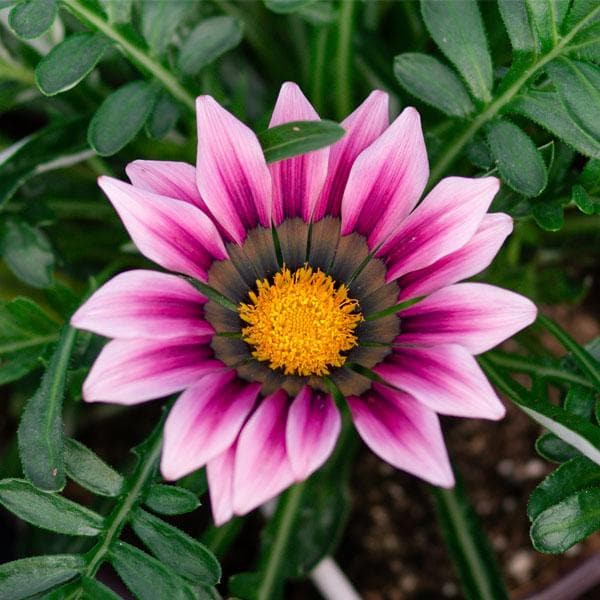
Gazania (Pink-White) - Plant
(MRP Inclusive of all taxes)
- Shipping ₹79 for entire order
- Dispatch in 7 days
- Country of origin: India

(MRP Inclusive of all taxes)
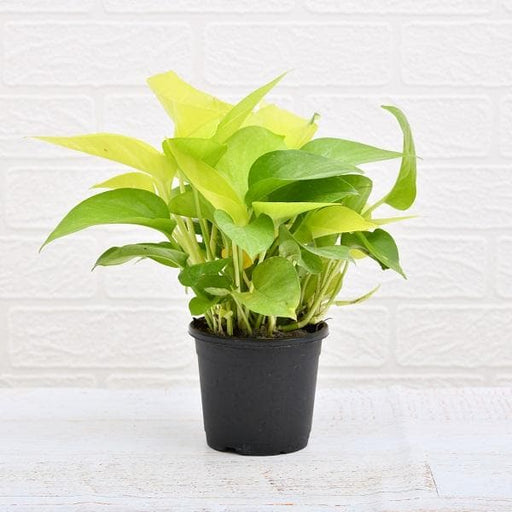 Save 29%
Save 29%
Air Purifier Money Plant with Pot The Air Purifier Money Plant, also known as Pothos or Epipremnum aureum, is a stunning indoor plant that...
View full details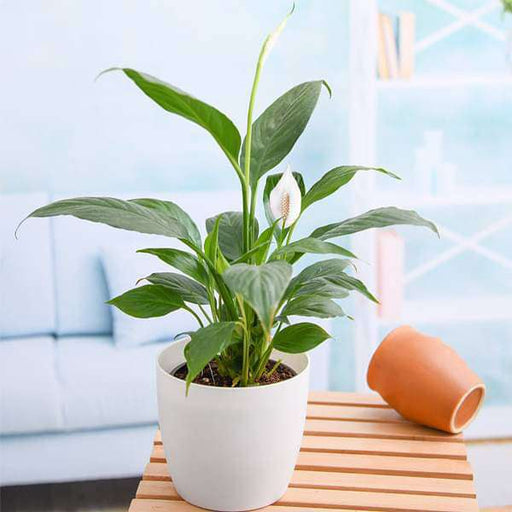
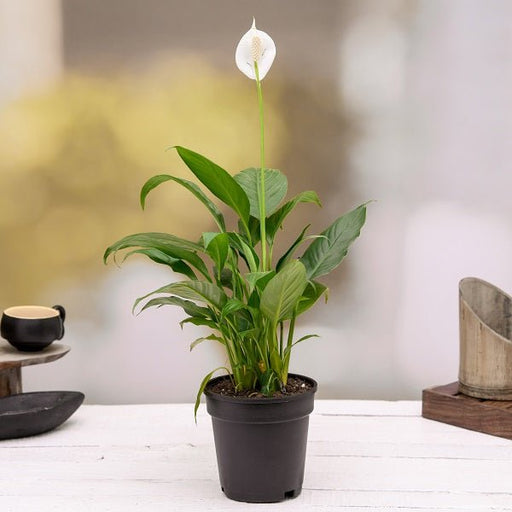 Save up to 15%
Save up to 15%
Peace Lily, Spathiphyllum - Plant The Peace Lily, scientifically known as Spathiphyllum, is a stunning houseplant celebrated for its elegant white...
View full details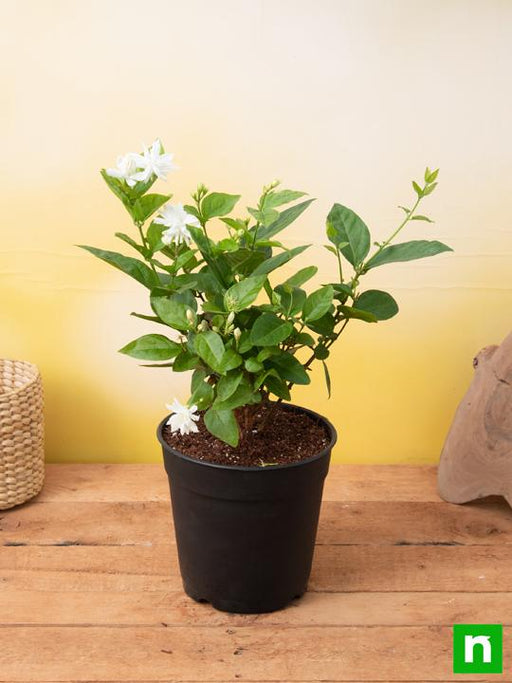
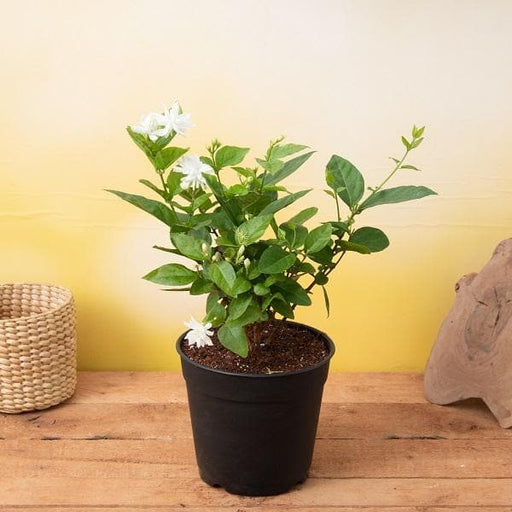 Save 25%
Save 25%
Jasminum sambac, Mogra, Arabian Jasmine - Plant Jasminum sambac, commonly known as Mogra or Arabian Jasmine, is a fragrant flowering plant...
View full details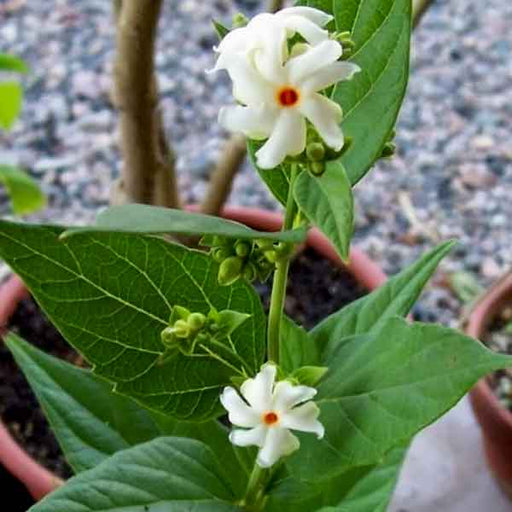
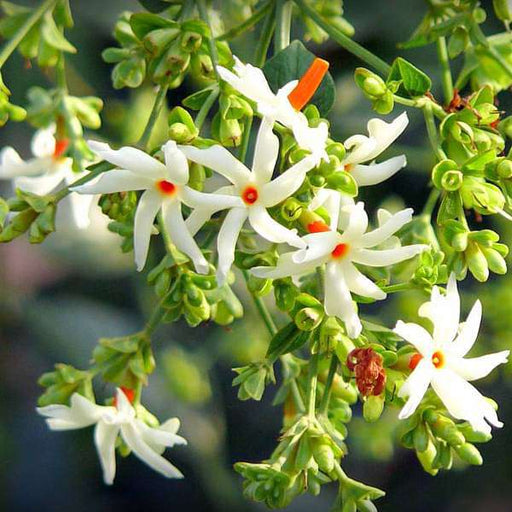 Save 18%
Save 18%
Combo Constituents Includes the Parijat Tree (Night-Flowering Jasmine), a culturally significant plant with fragrant flowers. Description The Pari...
View full details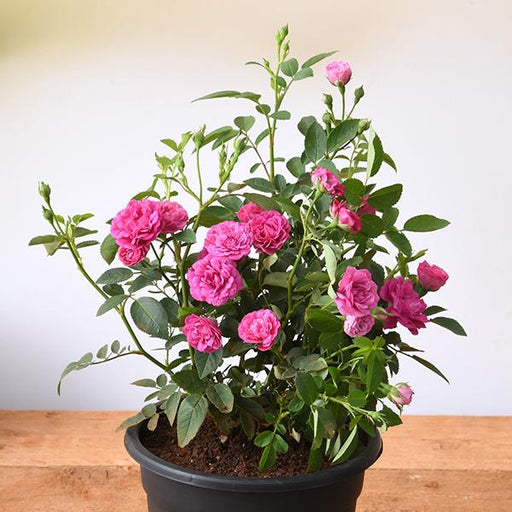
 Save 25%
Save 25%
Miniature Rose, Button Rose (Any Color) - Plant The Miniature Rose, also known as the Button Rose, is a charming and compact flowering plant that ...
View full details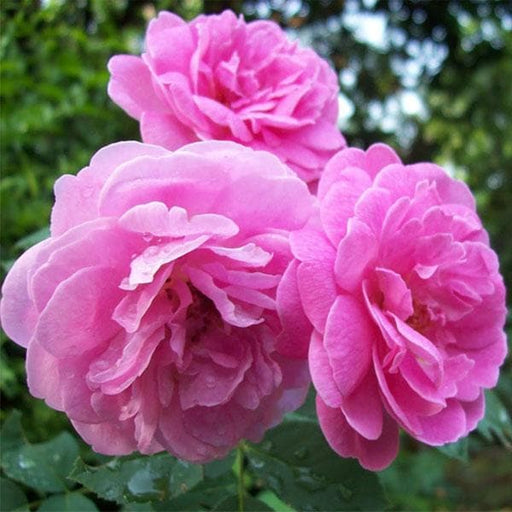 Save 25%
Save 25%
Damascus Rose, Scented Rose (Any Color) - Plant The Damascus Rose, also known as Rosa damascena, is a timeless symbol of beauty and romanc...
View full details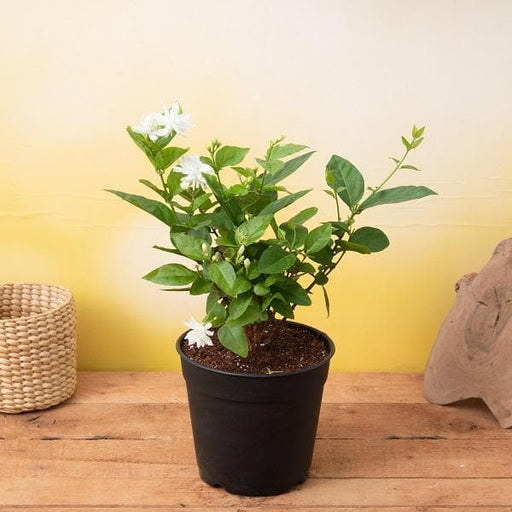
 Save 17%
Save 17%
Beautiful Fragrant Mogra, Arabian Jasmine Plant with Pot The Beautiful Fragrant Mogra, also known as Arabian Jasmine (Jasminum sambac), is...
View full details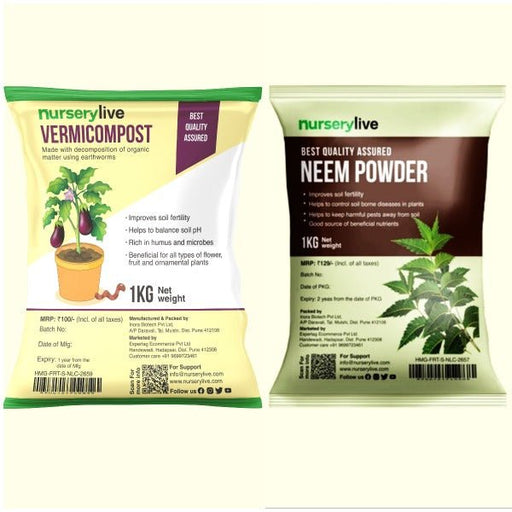 Save 15%
Save 15%
Pack of Vermicompost and Neem Cake for House Plants Transform your indoor garden with our premium Pack of Vermicompost and Neem Cake, spec...
View full details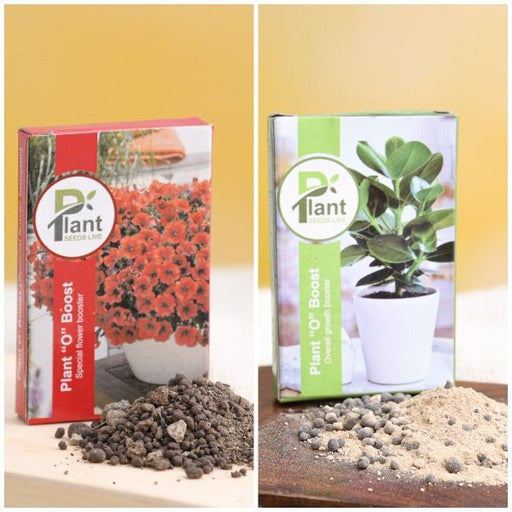
Pack of Plant Growth and Flower Boosters Unlock the full potential of your garden with our Pack of Plant Growth and Flower Boosters! This ...
View full details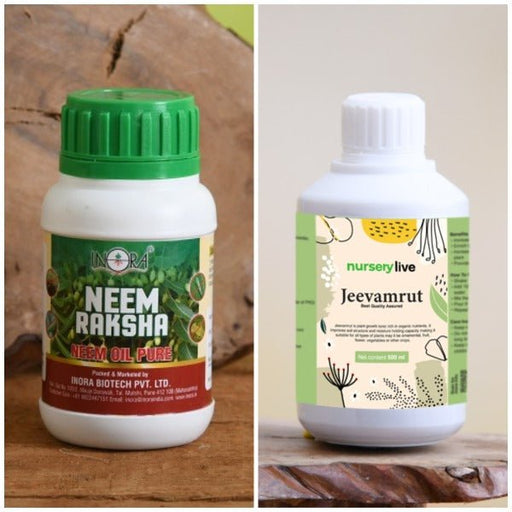 Save 38%
Save 38%
Combo of Jeevamrut and Neem Raksha for Easy Growth and Protection of Houseplants Transform your indoor garden with our exclusive combo of ...
View full details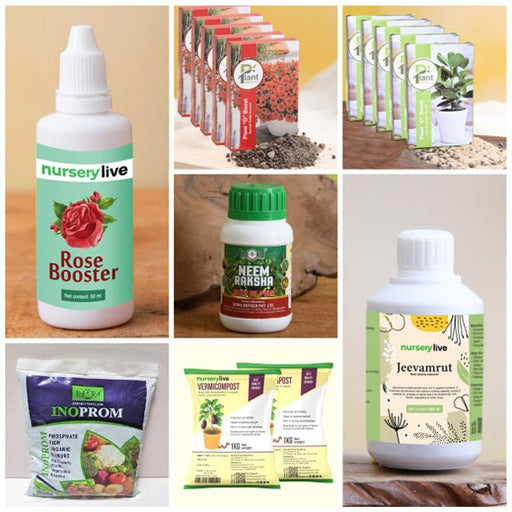 Save 22%
Save 22%
Plant Nutrients Kit (Pack of 16) for a Healthy Garden Transform your garden into a lush paradise with our Plant Nutrients Kit, featuring 1...
View full details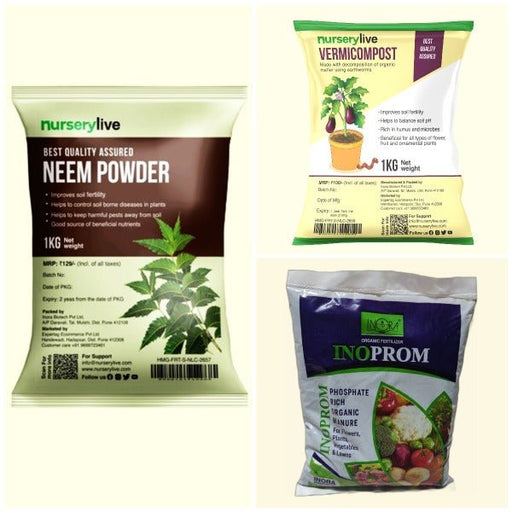 Save 16%
Save 16%
Combo of Top Plant Fertilizers Elevate your gardening game with our exclusive Combo of Top Plant Fertilizers, featuring two bags of premiu...
View full details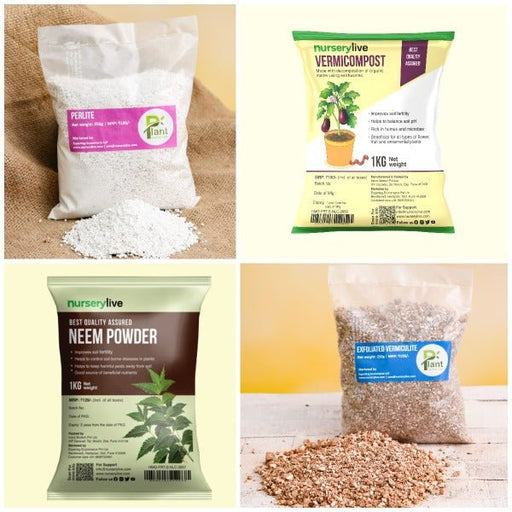 Save 24%
Save 24%
Pack of 4 Additives to Make Soil Healthy and Nutrient Rich Transform your garden into a thriving ecosystem with our Pack of 4 Additives de...
View full details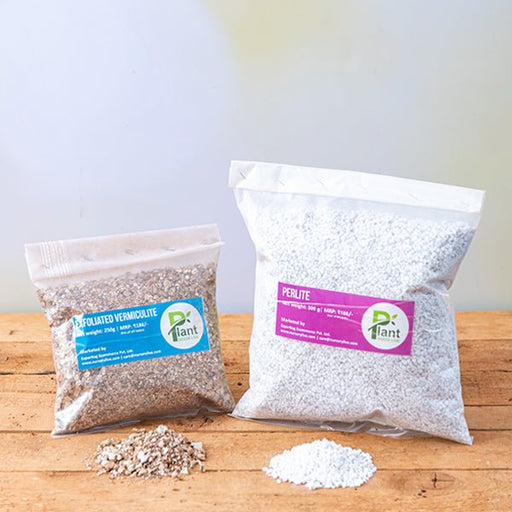 Save 30%
Save 30%
Transform your gardening experience with our premium Combo of Perlite and Vermiculite. This unique blend is designed to enhance soil aeration and ...
View full details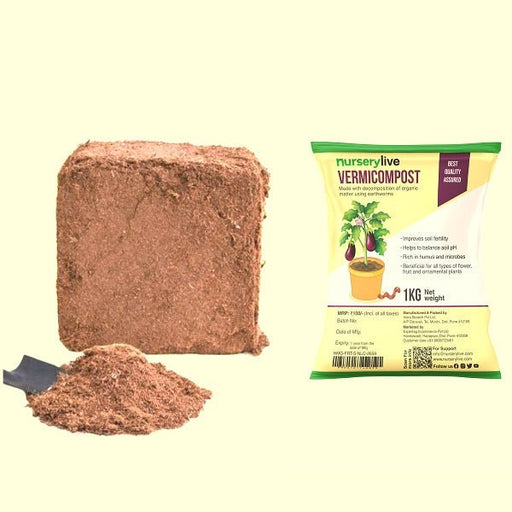 Save 27%
Save 27%
Combo of 2 Vermicompost and Cocopeat - Enrich Your Soil Naturally! Transform your garden into a thriving ecosystem with our Combo of 2 Ver...
View full details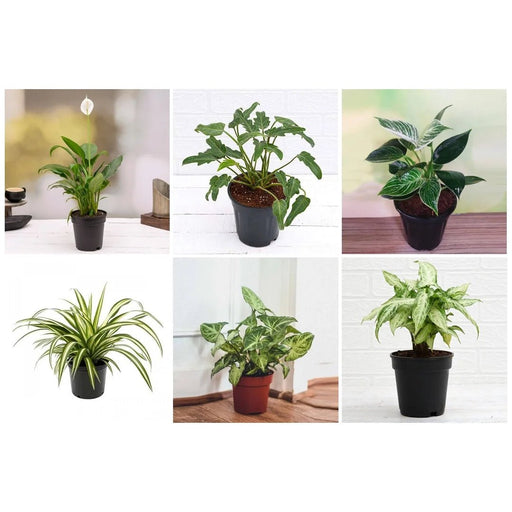
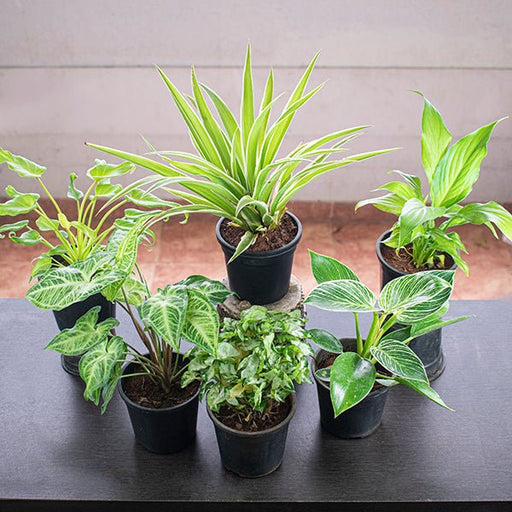 Save 35%
Save 35%
Best 6 Plants for Perfect Indoor Garden Transform your living space into a lush oasis with our curated collection of the Best 6 Plants for a...
View full details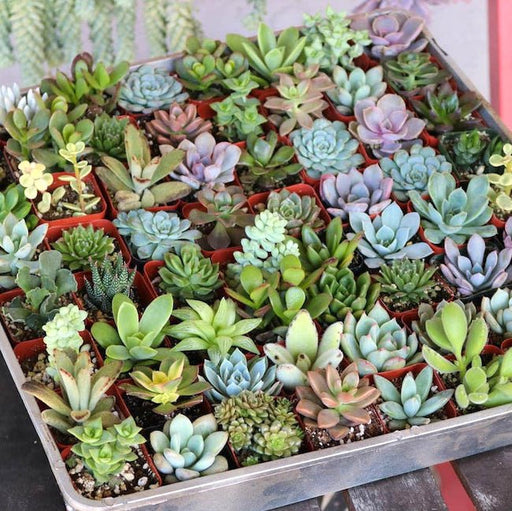
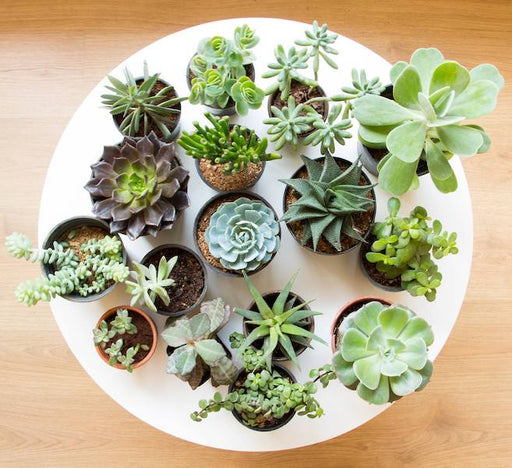 Save up to 50%
Save up to 50%
Mini Succulent Garden Pack Transform your space with our Mini Succulent Garden Pack, featuring a delightful collection of 4 any variety beautiful s...
View full details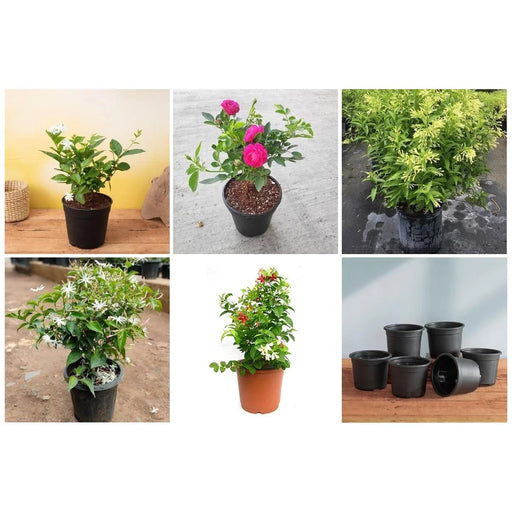
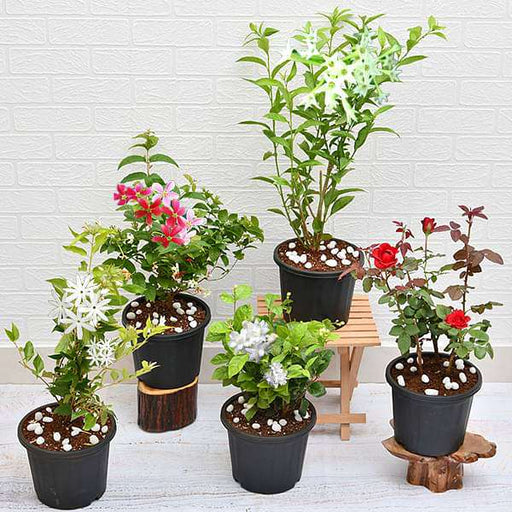 Save 30%
Save 30%
5 Best Fragrant Plants Transform your garden or indoor space into a fragrant paradise with our curated selection of the 5 Best Fragrant Plants. Th...
View full details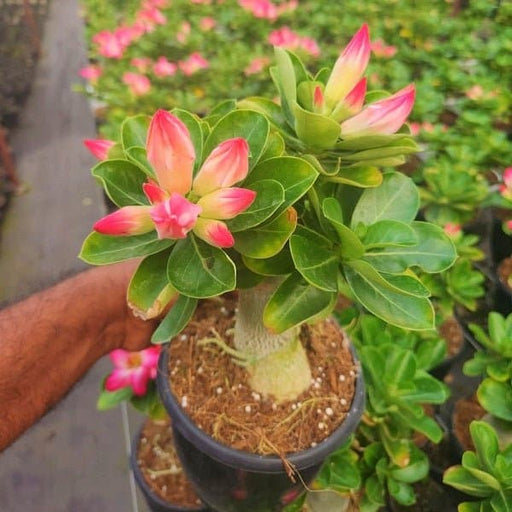
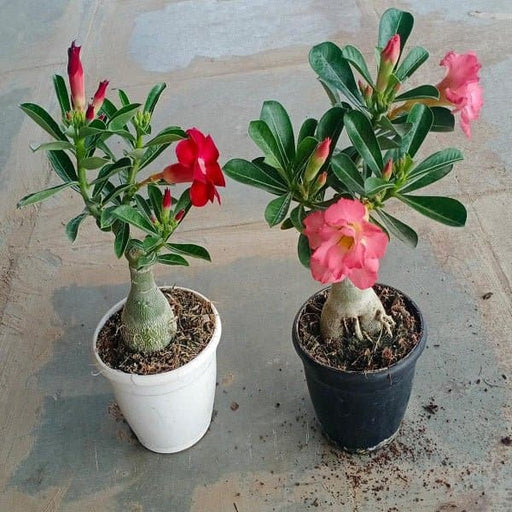 Save 24%
Save 24%
Set of 2 Bonsai Looking Grafted Adeniums Transform your indoor or outdoor space with our exquisite Set of 2 Bonsai Looking Grafted Adenium...
View full details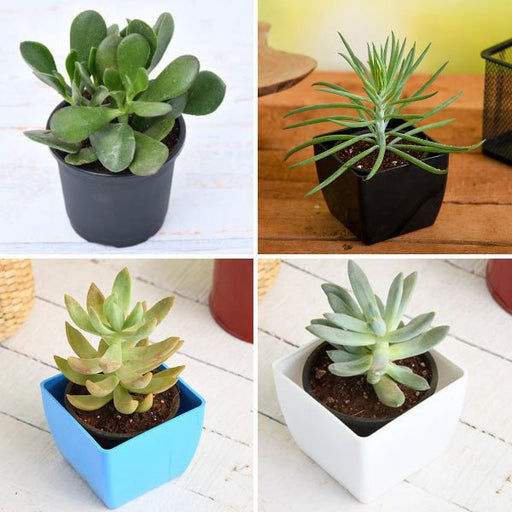 Save 45%
Save 45%
Top 4 Die Hard Succulents Pack Transform your indoor or outdoor space with our Top 4 Die Hard Succulents Pack, featuring a curated selecti...
View full details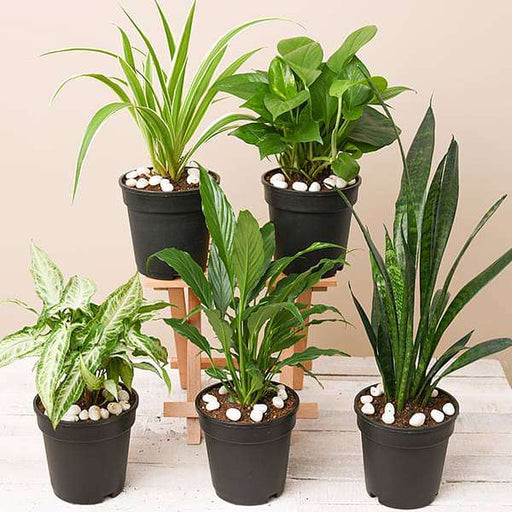
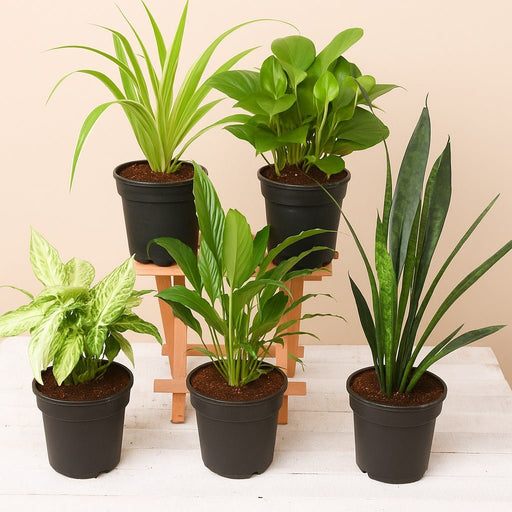 Save 30%
Save 30%
5 Best Indoor Plants Pack Transform your living space into a lush oasis with our '5 Best Indoor Plants Pack.' This carefully curated collection fe...
View full details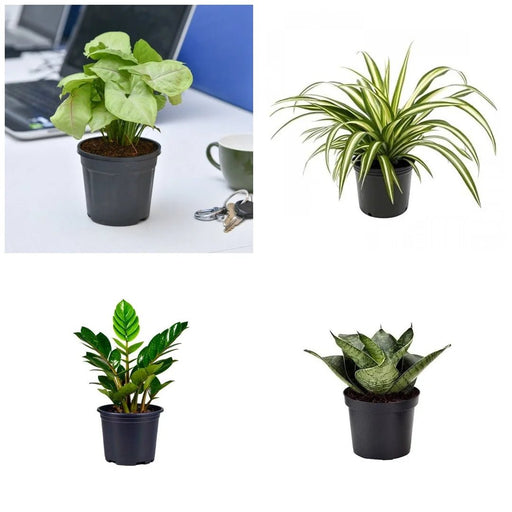
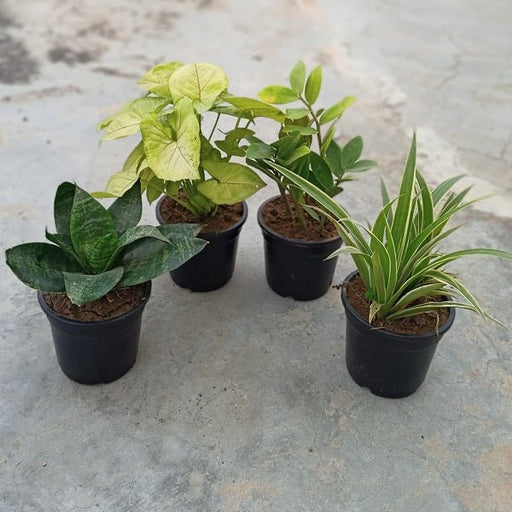 Save 25%
Save 25%
Set of 4 Evergreen Air Purifier Plant Pack Transform your indoor space into a lush, green oasis with our Set of 4 Evergreen Air Purifier Pla...
View full details| SrNo | Item Name | Qty |
|---|---|---|
| 2 | Gazania (Pink White) Plant in 6 inch (15 cm) Pot | 1 |
The Gazania (Pink-White) is a stunning perennial flower known for its vibrant, daisy-like blooms that showcase a beautiful blend of pink and white hues. Native to South Africa, this hardy plant thrives in sunny environments, making it a perfect addition to gardens, borders, and containers. With its ability to withstand drought and poor soil conditions, the Gazania is not only visually appealing but also an eco-friendly choice for sustainable gardening.
This unique variety of Gazania stands out due to its striking color combination and resilience. It attracts pollinators like bees and butterflies, contributing to local biodiversity. Additionally, its low maintenance requirements make it an ideal choice for both novice and experienced gardeners looking to add a splash of color to their outdoor spaces.
The Gazania (Pink-White) features a remarkable ability to bloom profusely even in challenging conditions. Its flowers open in full sun and close at night, creating a dynamic display throughout the day. This plant is also known for its long blooming season, providing continuous color from spring to fall.
By planting Gazania (Pink-White), you contribute to a healthier ecosystem. Its ability to attract pollinators supports local wildlife, while its drought-resistant nature helps conserve water resources. This makes it an excellent choice for sustainable gardening practices.
Gazania care is like giving your plant a spa day—minus the cucumber slices. These sun-loving beauties thrive in well-drained soil and bask in full sunlight. Water them sparingly, as they prefer to be a little thirsty rather than drowning in attention. Pruning spent blooms will keep them looking fresh and fabulous, just like a good haircut. Remember, less is more when it comes to fertilizer; a little boost goes a long way!
Gazania varieties are like a box of chocolates—each one is a delightful surprise! From the classic yellow to the stunning pink-white combo, these flowers come in a rainbow of colors. Each variety has its own personality, so whether you want a bold statement or a subtle accent, there’s a Gazania for you. Mix and match for a garden that’s as vibrant as a carnival!
Planting Gazania is like setting the stage for a floral performance. Choose a sunny spot, dig a hole, and let these beauties shine! They’re not picky about soil, but good drainage is key—think of it as giving them a comfy bed to sleep in. Space them out to avoid crowding; after all, no one likes a plant party where everyone’s stepping on each other’s roots!
Gazania benefits are like the cherry on top of your gardening sundae. These hardy plants are drought-tolerant, making them perfect for those who forget to water (no judgment here). They attract pollinators, so you’ll have bees buzzing and butterflies fluttering, turning your garden into a lively ecosystem. Plus, their vibrant blooms can brighten up any dull corner of your yard!
Gazania propagation is the art of plant matchmaking. You can easily propagate these beauties through seeds or division. Just remember, patience is key—good things come to those who wait! Once you’ve got your new plants, treat them like royalty and watch them flourish. Soon, you’ll have a Gazania empire that would make any gardener green with envy!
Gazania pests are the uninvited guests at your garden party. Aphids and snails might try to crash the scene, but fear not! A little neem oil or insecticidal soap can send them packing. Keep an eye out for any signs of trouble, and your Gazanias will remain the belle of the ball, dazzling everyone with their vibrant blooms.
Gazania landscape design is where creativity meets nature. These plants are perfect for borders, rock gardens, or even as ground cover. Their low-growing habit means they won’t overshadow your taller plants, but they’ll still steal the show with their colorful display. Mix them with other drought-tolerant plants for a stunning, low-maintenance garden that’s the envy of the neighborhood!
Gazania in containers is like having a portable party! These plants thrive in pots, making them perfect for patios or balconies. Choose a stylish container that complements your decor, and watch as your Gazanias turn heads. Just ensure they have good drainage—nobody likes soggy roots. With a little love, your container garden will be the talk of the town!
Gazania sun exposure is the secret to their success. These sun-worshippers crave full sunlight, so don’t be shy about giving them the spotlight. A sunny location will encourage vibrant blooms and healthy growth. If they start to look a bit leggy, they might be asking for more sun—like a plant version of “I need my vitamin D!”
Gazania watering is a delicate dance between too much and too little. These plants prefer to dry out between waterings, so channel your inner Goldilocks—find that “just right” balance. Overwatering can lead to root rot, while underwatering might leave them parched. A good rule of thumb is to check the soil; if it’s dry an inch down, it’s time for a drink!
Gazania fertilization is like giving your plants a little pick-me-up. A light application of a balanced fertilizer in the spring will keep them thriving. But remember, these plants are not high-maintenance divas; they don’t need constant pampering. Too much fertilizer can lead to lush foliage at the expense of blooms, and we all know that’s a gardening faux pas!
Gazania (Pink-White) is a dazzling perennial flower that flaunts vibrant pink and white petals. It’s like nature’s confetti, perfect for brightening up your garden. This sun-loving beauty thrives in well-drained soil and is a favorite among pollinators. Who wouldn’t want a little party in their backyard
Caring for Gazania (Pink-White) is as easy as pie! Just plant it in full sun, water it moderately, and watch it bloom like it’s auditioning for a floral fashion show. Deadhead spent flowers to encourage more blooms, and remember, this diva prefers well-drained soil. No soggy feet for this star!
Gazania (Pink-White) blooms from late spring to early fall, putting on a show that rivals any summer blockbuster. With its cheerful petals opening in the sun, it’s like a floral alarm clock, waking up your garden with vibrant colors. Just sit back, relax, and enjoy the floral fireworks!
Gazania (Pink-White) is not a fan of winter’s frosty embrace. In colder climates, it’s best to treat it like a diva and bring it indoors or mulch it well. In warmer zones, it may survive, but don’t count on it throwing a winter party. It prefers to stay warm and fabulous!
Yes, Gazania (Pink-White) is like the bouncer of the garden, keeping deer at bay with its unpalatable taste. While they might nibble on other plants, they’ll pass on this vibrant beauty. So, plant it with confidence and let it shine without worrying about uninvited guests munching on its petals!
Water Gazania (Pink-White) like you’re giving it a refreshing spa day—moderately! Allow the soil to dry out between waterings, as this plant prefers a little drought over soggy conditions. Too much water can lead to root rot, and we wouldn’t want our star to lose its luster!
Gazania (Pink-White) thrives in well-drained, sandy or loamy soil. Think of it as a beach-loving plant that enjoys a little grit in its life. Avoid heavy clay soils that hold water like a sponge; this diva prefers to strut her stuff in a more breathable environment.
Absolutely! Gazania (Pink-White) loves the spotlight and can thrive in pots, making it a perfect patio companion. Just ensure the pot has drainage holes, and use a well-draining potting mix. With the right care, your potted Gazania will be the talk of the town, blooming beautifully all summer long!
Gazania (Pink-White) is a perennial superstar, returning year after year to dazzle your garden. In warmer climates, it’ll keep coming back for an encore, while in colder areas, it may act like a seasonal performer. Either way, it’s a reliable choice for long-lasting beauty!
Gazania (Pink-White) is generally pest-resistant, but watch out for aphids and spider mites trying to crash the party. If they show up uninvited, a gentle spray of water or insecticidal soap can send them packing. Keep your Gazania healthy, and it’ll keep the pests at bay like a true garden diva!
Yes, Gazania (Pink-White) is a drought-tolerant champion! Once established, it can handle dry spells like a pro, making it perfect for low-maintenance gardens. Just remember, while it enjoys a little drought, it still appreciates occasional watering to keep its blooms vibrant. It’s all about balance in the garden!
Propagating Gazania (Pink-White) is as easy as pie! You can do it through seeds or division. For seeds, sow them in spring, and watch them sprout like eager fans. For division, simply dig up established plants in spring or fall and replant them. Soon, you’ll have a Gazania fan club!